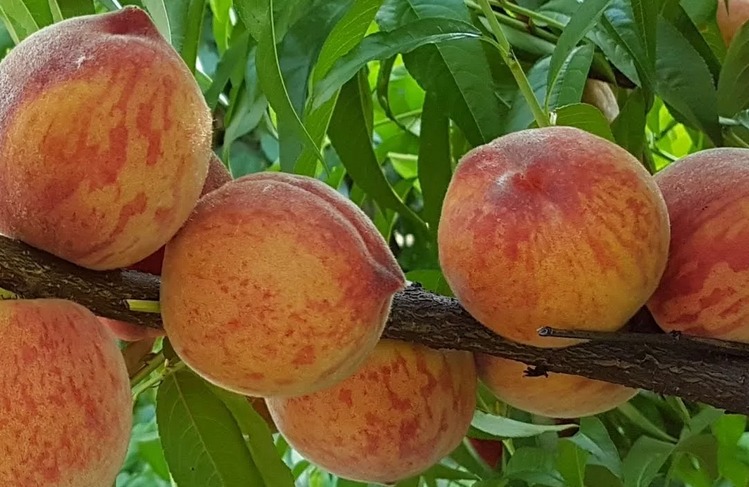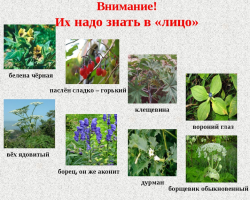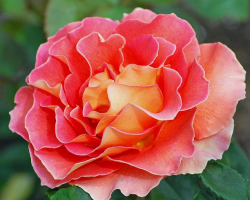Persian planting is a responsible process. It is important to know all the nuances, read in more detail in the article.
Content
- The tree "Persian ordinary" in the garden: appearance, the most popular varieties for landing in the country
- Persian ordinary: Basic requirements for landing and growing
- Video: Choosing the best time to plant seedlings
- Rules for the correct planting of peach seedlings in the spring, autumn in open ground in the middle lane of Russia, Belarus, Moscow Region: time, video
- Video: Persian landing in early spring - 100% growth
- Persian landing scheme: distance, video
- Video: The optimal distance between the trees
- Video: How to plant a peach correctly? Planting peach in the fall. Rules for planting seedlings of peach
- How and when to cut a peach after planting: care, video
- Video: How to cut a peach in the first year of landing, and in the second year?
- Video: Persian-pruning, forming in the 1st year, errors
- The most common diseases of peaches after planting
- Video: We plant a peach so that it will grow even in the north!
Ordinary peach Prunus Persica - A popular fruit tree that can be found in many gardens. It is not difficult to grow this plant if you observe its most important requirements. Therefore, we will talk about the most popular varieties and diseases of the peaches in this article.
Read in another article on our website about the correct planting of peas in the spring for seedlings, in open ground. You will learn about the timing, schemes, preparation. You will also learn about planting varieties and find a list of the best.
From this article you will learn how to plant a fruit tree, as well as how to do a pruning of a peach and much more. Read further.
The tree "Persian ordinary" in the garden: appearance, the most popular varieties for landing in the country
The flowering of the ordinary peach ends in April, its slightly gear leaves are also decorative value. In summer, delicious fruits appear, characterized by juicy sweet pulp. Their appearance and size depend on a particular variety of plants. Here is a description of the appearance and the most popular varieties of such trees for landing in the country:
- Fruit trees of the family Prunus Persica grow up to 6 meters In height, but such sizes are difficult to achieve in our climatic conditions.
- An ordinary peach is, as a rule, a small tree that in the spring gives peach flowers.
- Dwarf varieties Prunus Persica very popular, achieve 1.5 meters In height and also demonstrate abundant flowering. Interestingly, the general name of the tree comes from the color of inflorescences.
- Almost all varieties of ordinary peach are fruit very well in the garden.
- The fetus has a delicate peel and a characteristic color.
- In our climatic conditions, ordinary peach gives small fruits, which, in sufficient sunlight, become very sweet and fragrant.
- The fruits of such a fruit tree are also a valuable source of magnesium, phosphorus and potassium.
- Harvesting date - august-October.
Fruit trees of the Prunus Persica family have many interesting varieties, including:

- Persian ordinary "Reliance".
A popular medium -sized tree. The biggest advantage of this variety is high frost resistance, which makes it suitable for use in any region of our country. PRUNUS PERSICA RELAANCE Gives juicy fruits of small size, which are valued for their taste.

- Persian ordinary "Iskra" (ISKRA)
Another medium -sized fruit tree. Persian PRUNUS PERSICA ISKRA They differ quite large, very juicy fruits. The advantage of the variety is high fertility and visually attractive flowers. Has typical requirements, but not so resistant to spring frosts as Reliance Peach. Flowers "Spark" Prossessed by freezing, which makes it difficult to grow this variety.

- Persian ordinary velvet (Velvet)
These are fruit trees with typical forming requirements for this type. Velvet Prunus Persica Gives small, slightly flattened sweet fruits. Proper pruning of the peach provides its high fertility, and the velvet variety is valued mainly for excellent taste.

- Persian ordinary Harrow Beauty (Harrow Beauty)
An interesting tree with very sweet, large fruits. Persian flowers Harrow Beuti They may freeze - the plant needs to be protected from frost. Due to low frost resistance, such a variety is suitable for growing in the warmer regions of our country. Relatively low requirements and large juicy fruits make Prunus Persica Harrow Beauty Popular dessert variety.
Persian ordinary: Basic requirements for landing and growing
To fruit trees of the family Prunus Persica — persian is ordinary, low requirements for landing and cultivation are presented. The most important of them is to provide them with a suitable position and soil conditions.
- An ordinary peach grows best in a sunny place.
- A complete exposition from the south is good.
- It is worth remembering that the flower of this tree is subject to freezing.
- The risk of failure in growing will decrease if the seedling is planted in a place protected from the gusty cold wind.
Fruit trees, intensively fruiting, require a good substrate. The best soil with neutral pH. An ordinary peach does not grow on acidic and excessively moist soil. The requirements for the tree are significantly difficult to grow in plantings with residual rainwater and too heavy soil.
The requirements for the Earth and the correct location of the seedling are very important for the success of growing. Although the peach planted in an unfavorable place will grow, poor conditions will appear in the form of a limited or complete absence of fruits. In addition, if you plant in an inappropriate place, fruit trees will be more susceptible to diseases.
Video: Choosing the best time to plant seedlings
Rules for the correct planting of peach seedlings in the spring, autumn in open ground in the middle lane of Russia, Belarus, Moscow Region: time, video

Persian has the same planting requirements as other fruit trees. Seedlings are usually available with naked root lump, in bales and pots. It is best to buy a tree in a bmp or pot. A peach with a bare root system dries quickly, and delicate roots can be damaged during transportation. That is why this type of fruit trees has the least chances to take root. Deviation time:
- In the spring, the peach is planted with seedlings from March to June, depending on the region. It is important that the air temperature is constantly not lower than +5 ° C.
- In the fall, seedlings have been planted from mid -September (in the central regions of our country, the Moscow Region and in the middle lane) until the end of October (in warmer regions - Crimea, Krasnodar, Rostov Region, etc., as well as in Belarus).
Rules for the correct landing:
- Choose healthy, grown seedlings with fixed roots.
- To plant a new plant, just dig a hole.
- Its diameter should be slightly larger than the size of the roots.
- Place the compost mixture on the bottom of the pit.
- We dig fruit trees to the same depth as in the nursery. This means that the upper surface of the soil in the pot should coincide with the upper boundary of the earth.
- Having placed the seedling in the hole, gently sprinkle it with loose soil. Then we knead the substrate and water abundantly.
In the first year of growing, one should remember regular watering, because the young tree does not yet have an extensive root system. Fertilizers are not required if the peach is planted in fertile soil. However, the regular weeding of the Earth around the peach is very important. Look more in the video below.
Video: Persian landing in early spring - 100% growth
Persian landing scheme: distance, video

If you want to plant a peach garden on your site, then you should study the landing scheme. The distance between peaches and other trees, if it is a mixed garden, should be like this:
- Trees are placed with the interval 2.5–3.5 m.
- On average, the optimal gap is the doubled height of an adult plant.
- If seedlings are “dug up” in several rows, then they leave the interval between them about 5 m.
- Between neighboring trees make intervals from 2.5 to 4 m.
The distance on which the peach is planted depends on the useful area of \u200b\u200bthe site, but in any case, it is better to place plants away - with a large distance of the crown, the peaches are formed by sprawling and neighboring crops will not be shaded. Look more in the video below.
Video: The optimal distance between the trees
Video: How to plant a peach correctly? Planting peach in the fall. Rules for planting seedlings of peach
How and when to cut a peach after planting: care, video

Properly carried out wood pruning improves flowering and stimulates the good growth of the plant. How and when to cut a peach after planting? We proceed to the first pruning at the beginning of growing:
- In the spring we shorten all the shoots 20-30 cm. This will intensively stimulate the seedling to growth and improve its condition.
- Persian pruning must be repeated annually. The best time to start work is early spring.
- An ordinary peach copes well with forming, and regular shortening of shoots allows you to get the correct shape.
Remember: It is important to systematically do the removal of lateral shoots. This will prevent the growth of wood from the sides.
The crown of the peach should also be subjected to a thorough examination once every few years. Thanks to this, the fruits will have the best access to sunlight, which will provide faster maturation. If necessary, sanitary cutting is also performed:
- The work consists in removing shoots affected by diseases.
In subsequent years of growing, trimming the tree should not be as intense as at the very beginning. The plant itself begins to grow correctly, and the care is only the neatly shortening of the chosen extra shoots in the spring. Read more about the trimming of such trees in the video below.
Video: How to cut a peach in the first year of landing, and in the second year?
Video: Persian-pruning, forming in the 1st year, errors
The most common diseases of peaches after planting

Proper care makes plants more resistant to disease. However, like any other fruit tree, peach can be subject to various diseases. The most common diseases of peaches after planting:
- Bacterial cancer of the bone. Most often, it occurs as a result of improper pruning of shoots.
- The twisting of leaves is also a dangerous disease. At the first stage, it is manifested by a deterioration in the state of greenery. Both young and old leaves become thinner and brittle. At a later stage, their deformation occurs, and if not treated, the fruits of the tree are also affected.
- Cut off the affected areas with a sharp knife and grab 2 more healthy tissue.
- Make a wound. This will require a solution copper sulfate (2 %) or iron sulfate (3 %).
- After that, be sure to treat with a special antiseptic or at least clay.
Important: Be sure to hang it from the site and burn all the sick branches, rotten fruits and even sawdust. If the leaves are affected, then spraying with 1% Bordeaux liquid.
Persian diseases require timely intervention. Twisting of leaves can lead to their complete falling. Therefore, the tree must be treated with systemic fungicides.
It is also worth knowing:
- An ordinary peach may have new leaves in the summer.
- This is an unfavorable phenomenon that presses on a tree and promotes freezing it in the winter.
Both the twisting of the leaves and the cancer of fruit trees require the administration of properly selected fungicidal preparations. They can be purchased in special stores for gardeners. There are sold mixtures for breeding, which is convenient to process leaves, branches or wood trunk.
It is worth adding:
- Almost all fungal diseases of the peaches have the ability to quickly spread.
- This is a great threat to both large agricultural crops and fruit trees growing in small gardens.
- Therefore, in the event of a disease, it is worth acting as soon as possible.
- Correctly spraying will slow down the development of the disease, and at the same time will prevent its spread to other plants.
- Some gardeners also use preventive sprays, but this is rarely used in personal plots.
Another threat - brown and gray rot.
- Brown rot It is caused by pathogens Monilinia Laxa and Monilinia fructigena. A visible symptom of the disease is a change in the color of the flowers to the brown color, followed by shoots and leaves. Later, as the disease develops, spots appear on the fruits. Unfortunately, peaches affected by this disease cannot be eaten.
- Gray rot It also turns out to be dangerous for agricultural crops - this is another fungal disease that quickly spreads. It can be recognized by a characteristic raid that appears mainly on the shoots of peach. The absence of a quick reaction can lead to rotting of fruits.
If everything is done correctly, then you will grow a wonderful peach garden. Follow the tips in the article, and your trees will be healthy, beautiful, and the fruits are delicious. Good luck!
Video: We plant a peach so that it will grow even in the north!
Read on the topic:
- Landing, care, pruning, feeding and processing apple trees in the spring
- Useful advice to summer residents and gardeners for seed sowing, planting seedlings in the ground
- How to grow an apricot tree from a seed correctly?
- How and what to feed thuja in the spring, so as not to yellow, for rapid growth?
- Thui cultivation: planting with seeds and cuttings, care, pruning, disease







